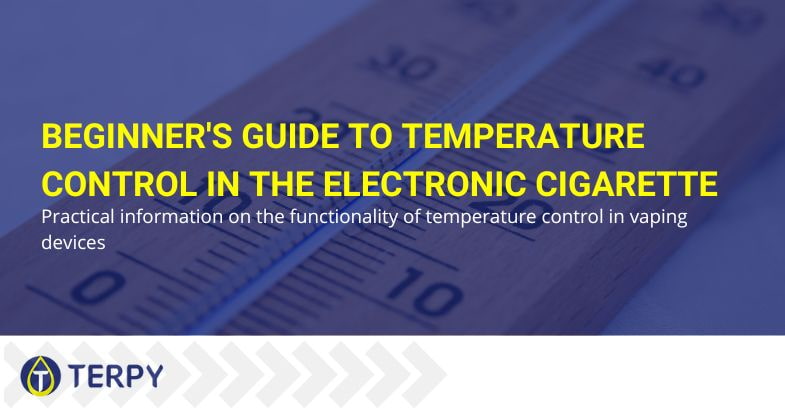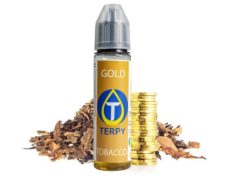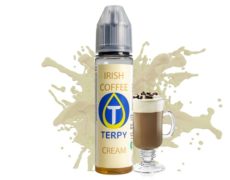Published on: 07/09/2022
Practical information on the functionality of temperature control in vaping devices
Do you know that horrible burnt taste? Or the annoyance caused by excessively hot vapour?
Well, if the answer to at least one of these questions is ‘yes’, this article is for you.
On this page, I will tell you about temperature control. This feature can help you avoid these unpleasant episodes and the risk of causing permanent damage to your heating element, forcing you to replace it sooner rather than later.
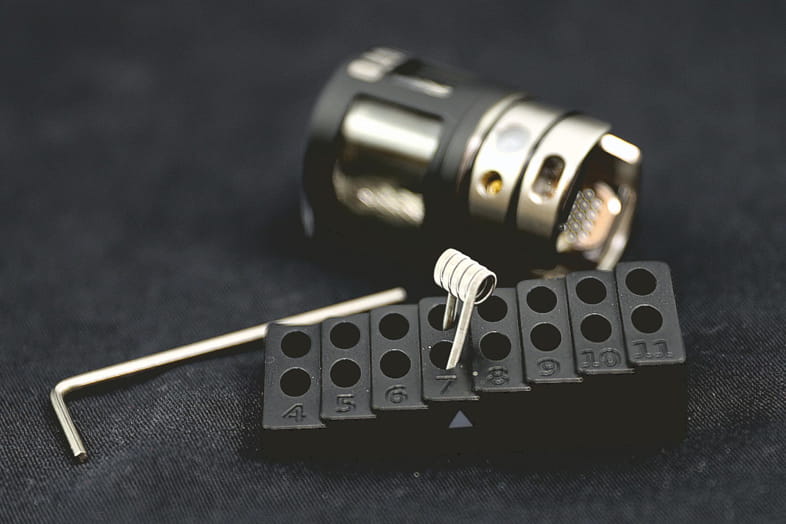

What is meant by electronic cigarette temperature control?
Temperature control (TC) is a potential remedy for minimising the inconvenience associated with overheating during vaping.
Adjusting the temperature of the electronic cigarette is an excellent way of limiting the heat generated by the heating elements, thus reducing the risk of cues, i.e. those puffs characterised by a terrible burnt taste.
Typically, vaping devices allow the wattage to be adjusted to control the power output at the moment of activation. With TC functionality, on the other hand, it is possible to set the maximum temperature that can be reached by the resistance while vaping. Once the coil heats up to the indicated value, the device stops delivering power, preventing excessive temperatures from reaching.
Why you might not be able to use temperature control
You first need to know that not all mods have temperature control functionality. If this is the case for your device, then sorry, but you will only be limited to wattage configuration.
If your mod has TC functionality, on the other hand, then you are free to activate it and configure it according to the type of resistance mounted on your atomiser.
Please note: coils are made from different materials, and not all are compatible for use in TC mode. Kanthal is among them, and, unfortunately, it is also the type of metal most frequently used to produce interchangeable head resistors. For this reason, if you do not own a rebuildable atomiser, you most likely cannot use it in TC mode.
Suppose you do own an RBA (i.e. regenerable) tank. In that case, however, you can choose to make your resistors from materials that support this feature, such as nickel and titanium, and configure your device to maintain an optimal temperature.
But, what is this optimal temperature?
How to adjust the temperature control when vaping
When we talk about the ideal temperature for vaping, we enter a very delicate terrain. There are numerous opinions on the subject, and it is unclear which one is the most correct. Furthermore, the ideal temperature depends on myriad factors, such as the material in which the resistance is made.
In short, there would be books to write on this subject, but here we want to try to simplify things for you.
My suggestion is this: try setting the maximum temperature of your device to around 200°C and take a few puffs. If you are satisfied, then great: you have already discovered the ideal temperature for your taste.
It is more likely that 200°C is too low for your taste, and the vapour produced is not hot enough to bring out the aroma of your e-cigarette liquids. In this case, gradually increase the temperature by 5°C until you find the right balance.
Take care not to exceed 250°C! Above this value, your heating element would get too hot, regardless of its material! So take it easy, be patient, and you will find the right temperature to enjoy your vaping sessions to the fullest.
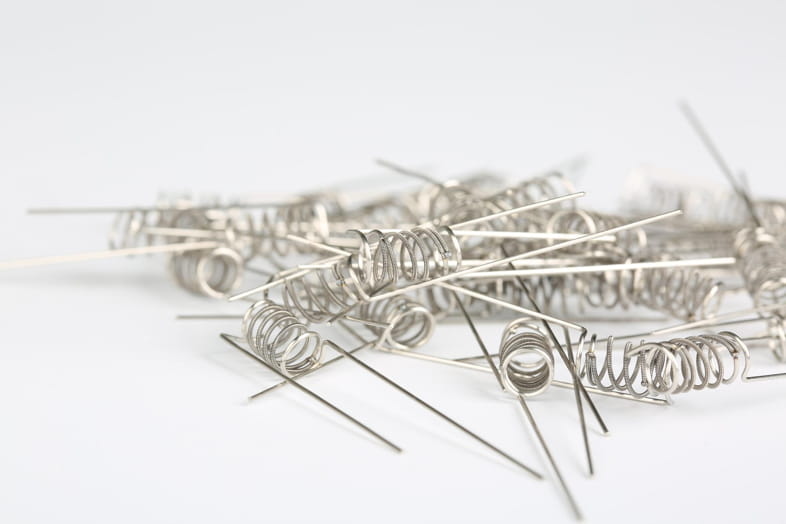

The disadvantages of temperature control in the electronic cigarette
Up to this point, I have explained how to set the temperature control to avoid some frequent disadvantages of vaping, such as coughing or too hot vapour.
Before concluding, however, it is only fair to point out some disadvantages of this feature so that you have all the necessary elements to decide whether or not to use it.
First, TC mode is unsuitable for beginners because it has a certain degree of complexity and requires numerous attempts to set it to the correct value. It is much simpler to set the delivered wattage, as most vapers do, and be careful not to practice those behaviours that could overheat the resistance, such as long and frequent puffs and not refilling the tank when the liquid is running out.
Moreover, as I explained, this feature is incompatible with certain materials from which coils are made, including kanthal, which is used for most resistors. In short, you probably can’t set this mode if you don’t own a rebuildable atomiser.
Finally, not all mods on sale are of high quality. If you come across a poor product, even if you use it in ‘power’ mode (i.e. adjusting the watts output), you should not have any particular problems. On the contrary, the temperature control functionality requires a suitable quality device. Otherwise, you risk having the opposite result, i.e. resistors that become glowing and don’t give a damn about how you set up your mod.
Read also: Vaping neutral base: is it a good idea?
In conclusion
Vaping with temperature control can be a great experience that allows you to enjoy your e-cigarette liquids optimally without the risk of overheating the heating element. Your coil will constantly maintain the ideal temperature for maximum performance.
However, as I explained, this is not a mode suitable for everyone but is mainly recommended for experienced vapers who own an eligible quality device.
It is up to you to decide whether to try this feature (if your mod allows you to do so) or to continue adjusting your e-cigarette by setting the watts, as most vapers do.
Whatever your choice, one last tip: if you are looking for the best for your vaping sessions, look at the e-cigarette liquids and all the other products available in our shop.
At Terpy, you can find e-liquids, concentrated flavours, nicotine bases and many other top-quality items!

